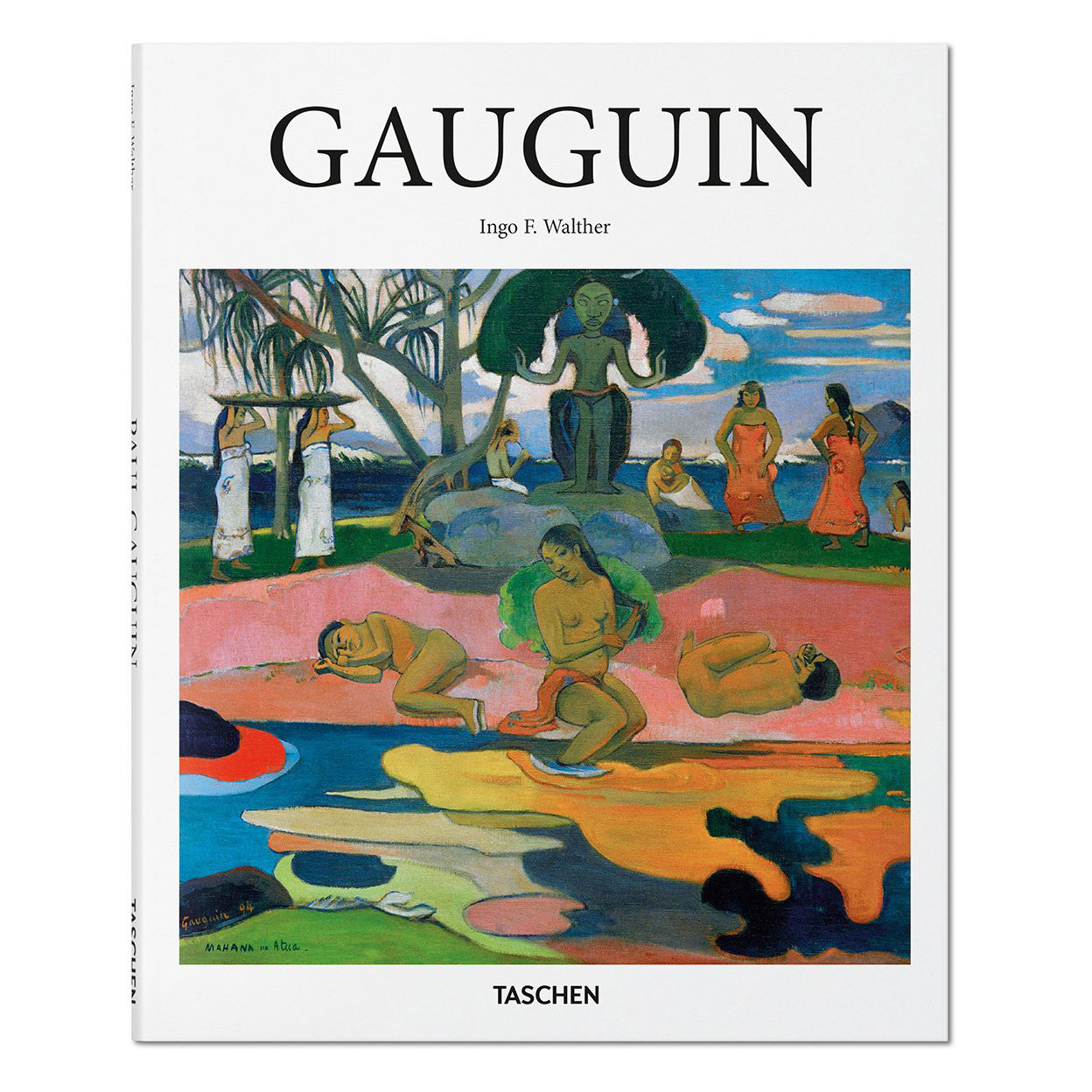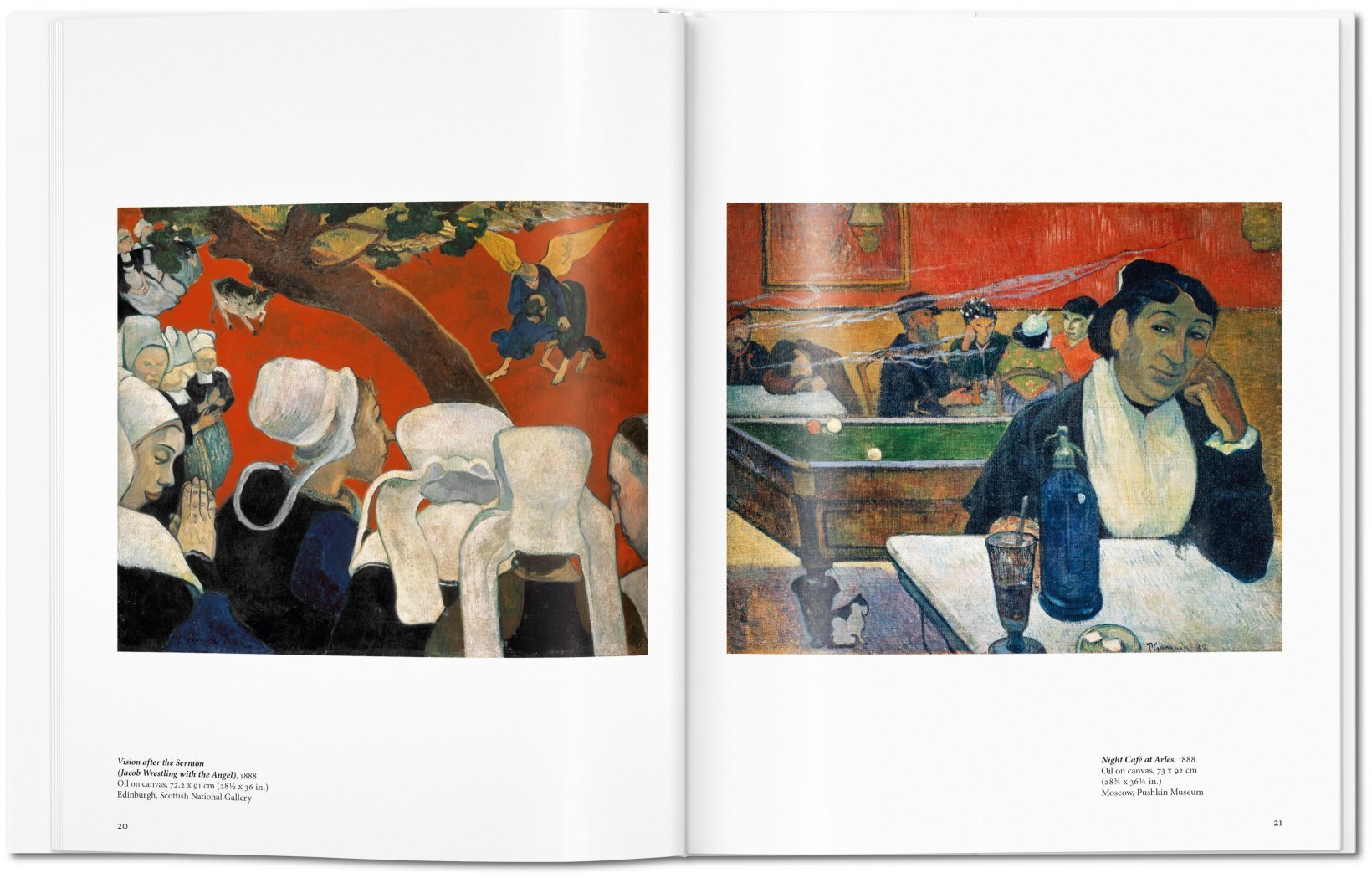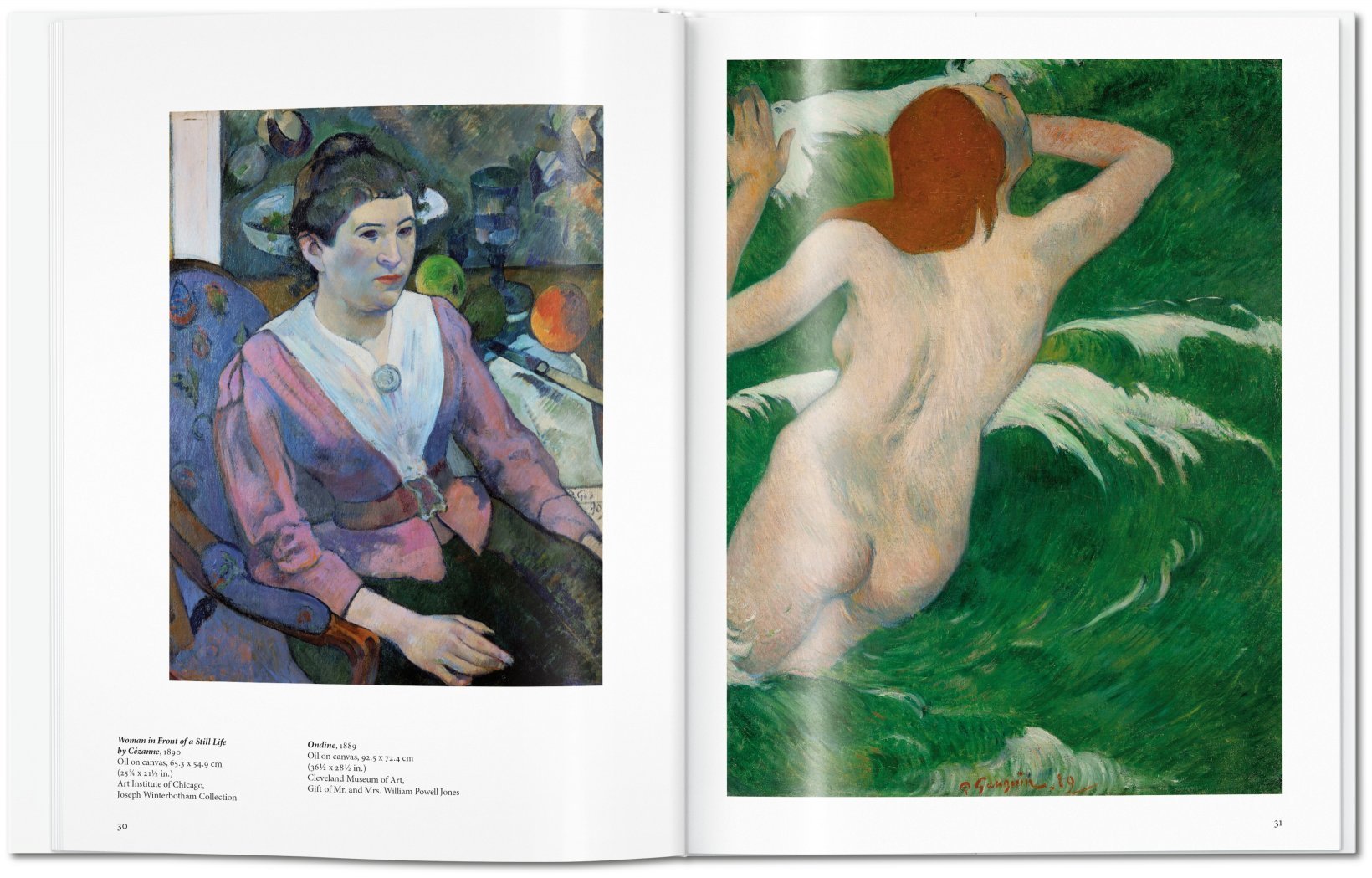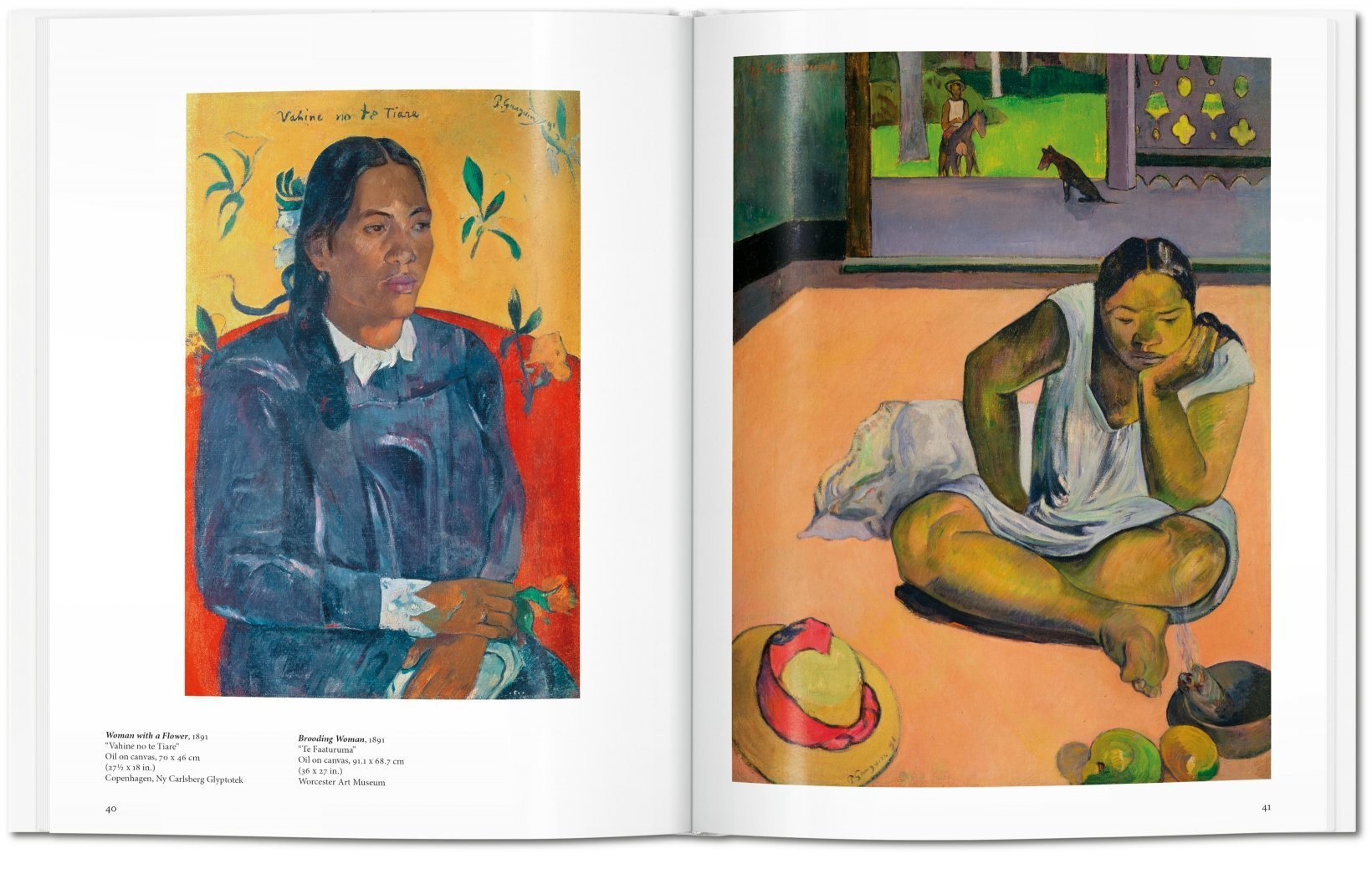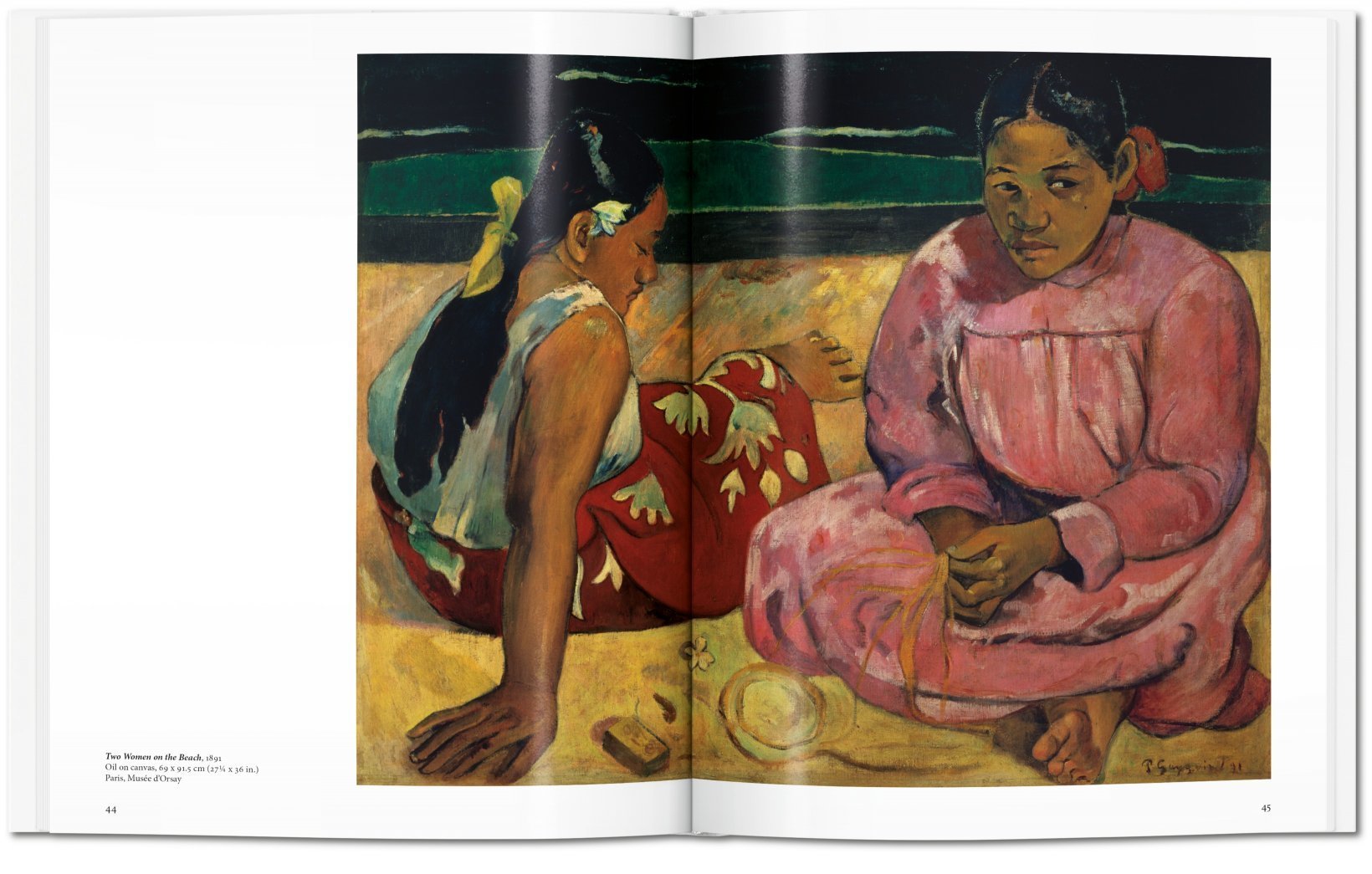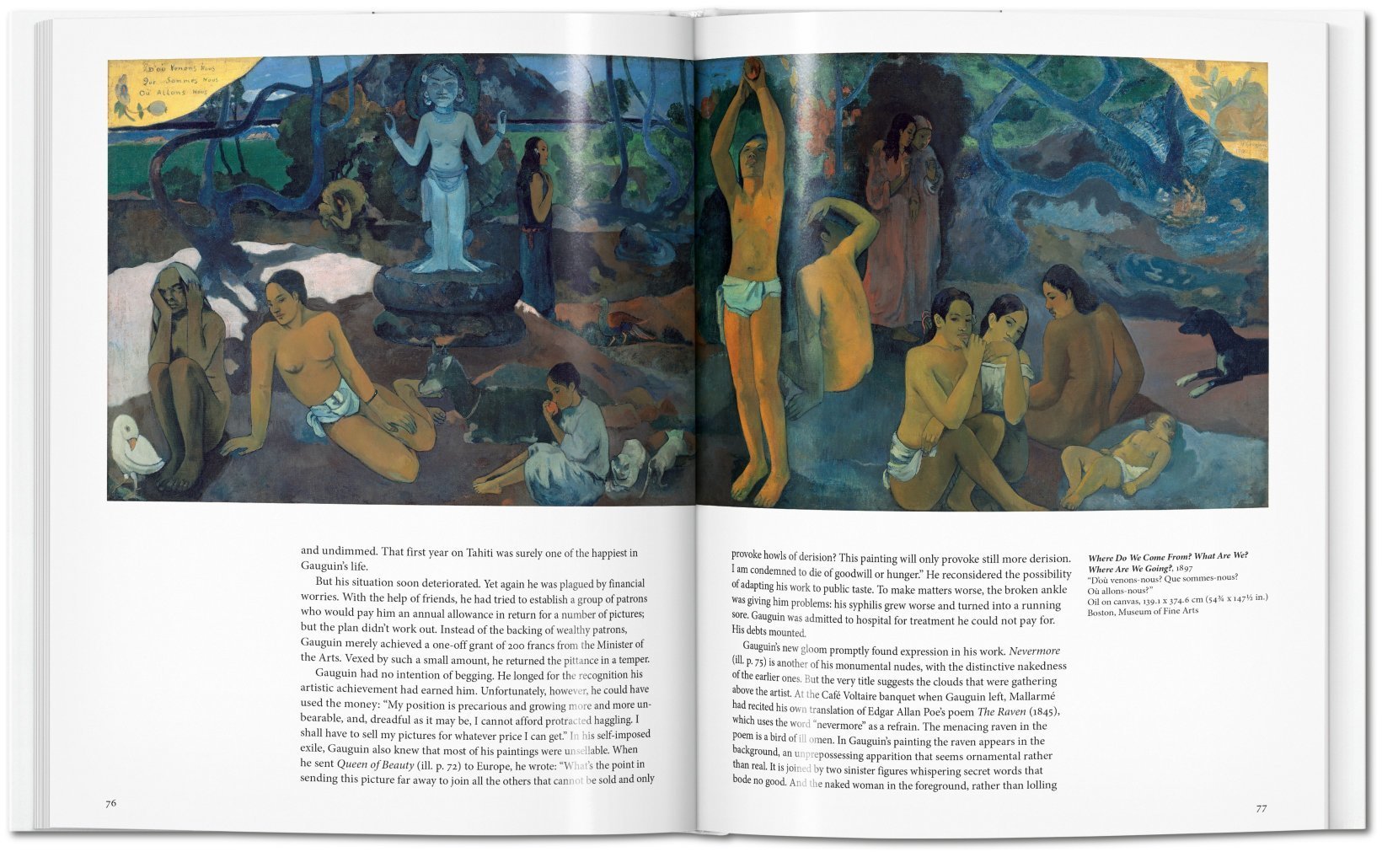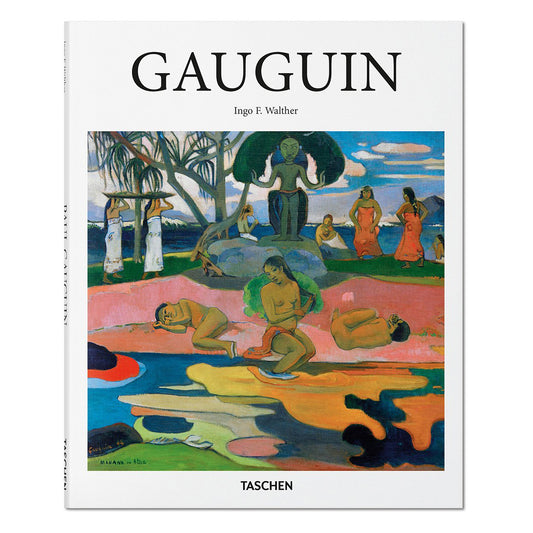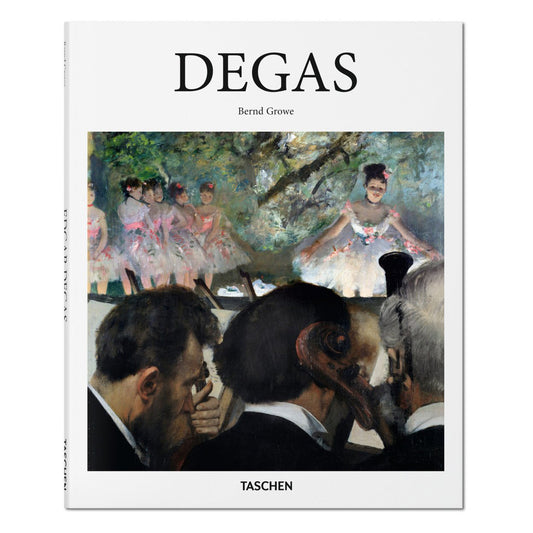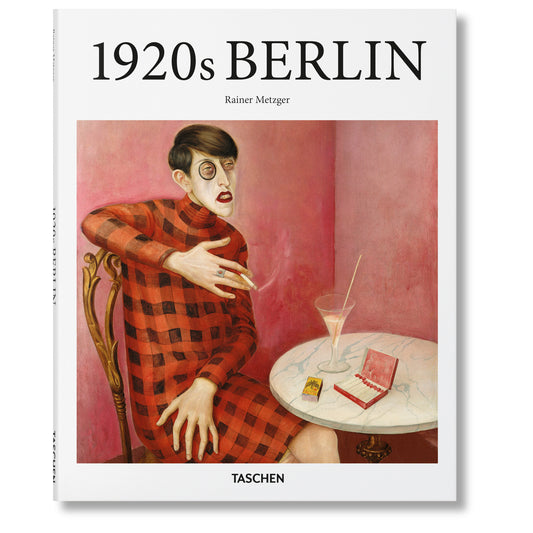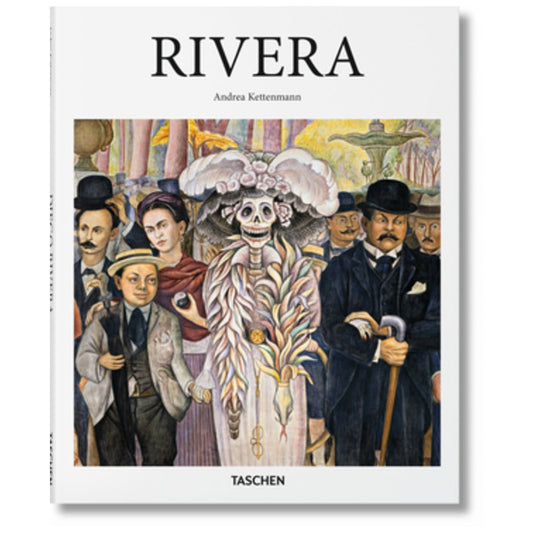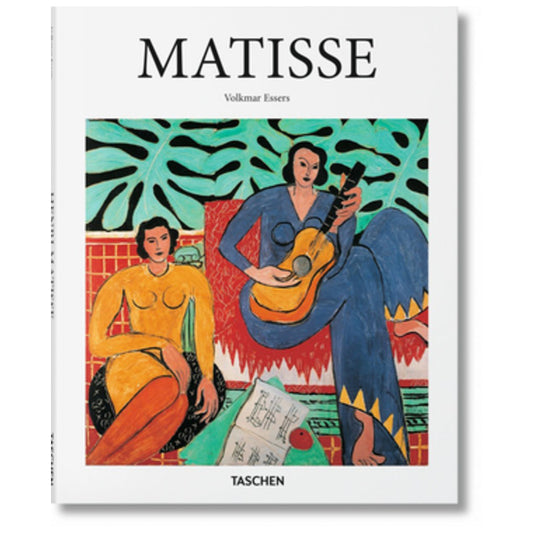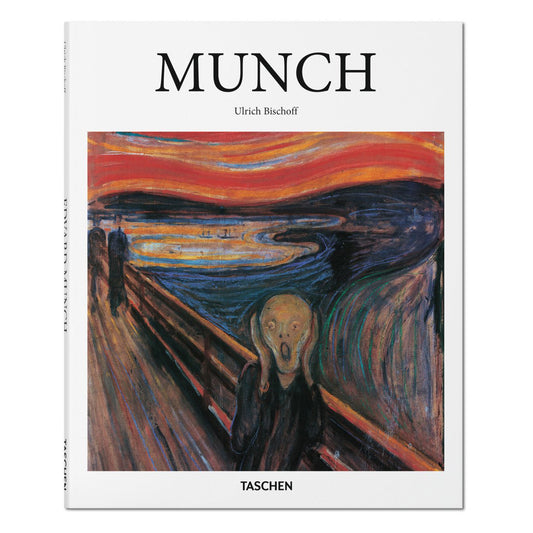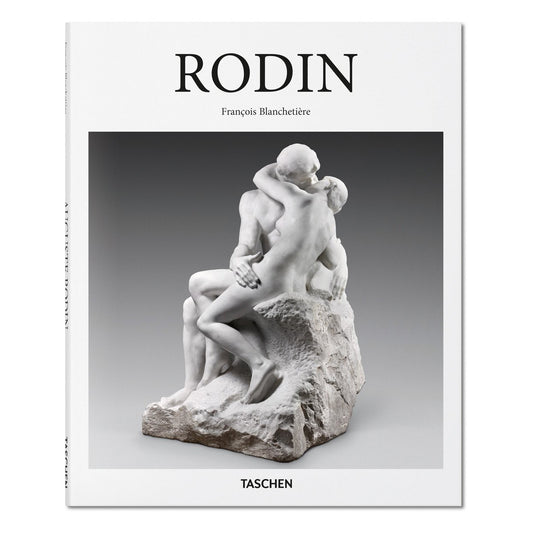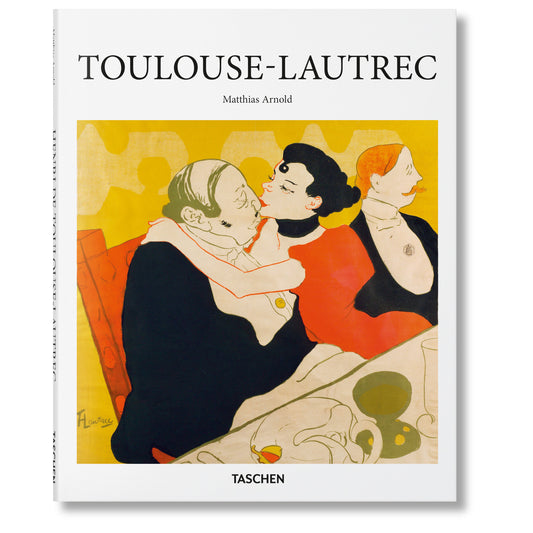Gauguin
Gauguin
Low stock
Couldn't load pickup availability
Paul Gauguin (1848–1903) had a series of unsuccessful ventures in finance, the French Navy, and as a salesman. He started painting in 1873 and exhibited alongside Pissarro, Degas, and Monet three years later. Known for his tempestuous nature, Gauguin referred to himself as a "savage". His tumultuous friendship with Vincent van Gogh reached a breaking point in 1888, when van Gogh confronted him with a razor blade and later mutilated his own ear. Following the completion of his midcareer masterpiece Vision After the Sermon (1888), Gauguin sought escape in Tahiti to embrace the authenticity and freedom he craved.
In Tahiti, Gauguin found inspiration in the island's nature, people, and figurative images, resulting in a prolific output of vibrant paintings and prints. His distinctive Primitivist style, seen in works like Woman with a Flower (Vahine no te Tiare, 1891) and Sacred Spring: Sweet Dreams (Nave Nave Moe, 1894), exuded radiant color and sensual depictions of Tahitian women. Gauguin passed away alone on the Marquesas Islands, with his personal belongings scattered in a local auction. It was only when a discerning art dealer curated and showcased Gauguin's work in Paris that his profound influence emerged, captivating avant-garde artists like Picasso and Matisse.
This book provides an essential introduction to Gauguin's colorful life, from his participation in the Impressionist salons of 1870s Paris to his final days in the Pacific, characterized by productivity and unwavering passion.
- English edition
Product Details
Product Details
- Product Type: Monograph, Hardcover
- 96 pages, with 100 illustrations
- Published in 2017
- Shipping Dimensions: 10.2 × 8.3 × 0.6 inches (25.9 × 21.1 × 1.5 cm)
- Shipping Weight: 1.24 lb (19.8 oz; 562 g)
- SKU: SKU: SKU010002442
- ISBN: 9783836532235
In these collections:
All Products, Basic Art Series Monographs, Books & Media, Discountable Products, Gifts Under $25, Monographs, Paul Gauguin, Taschen.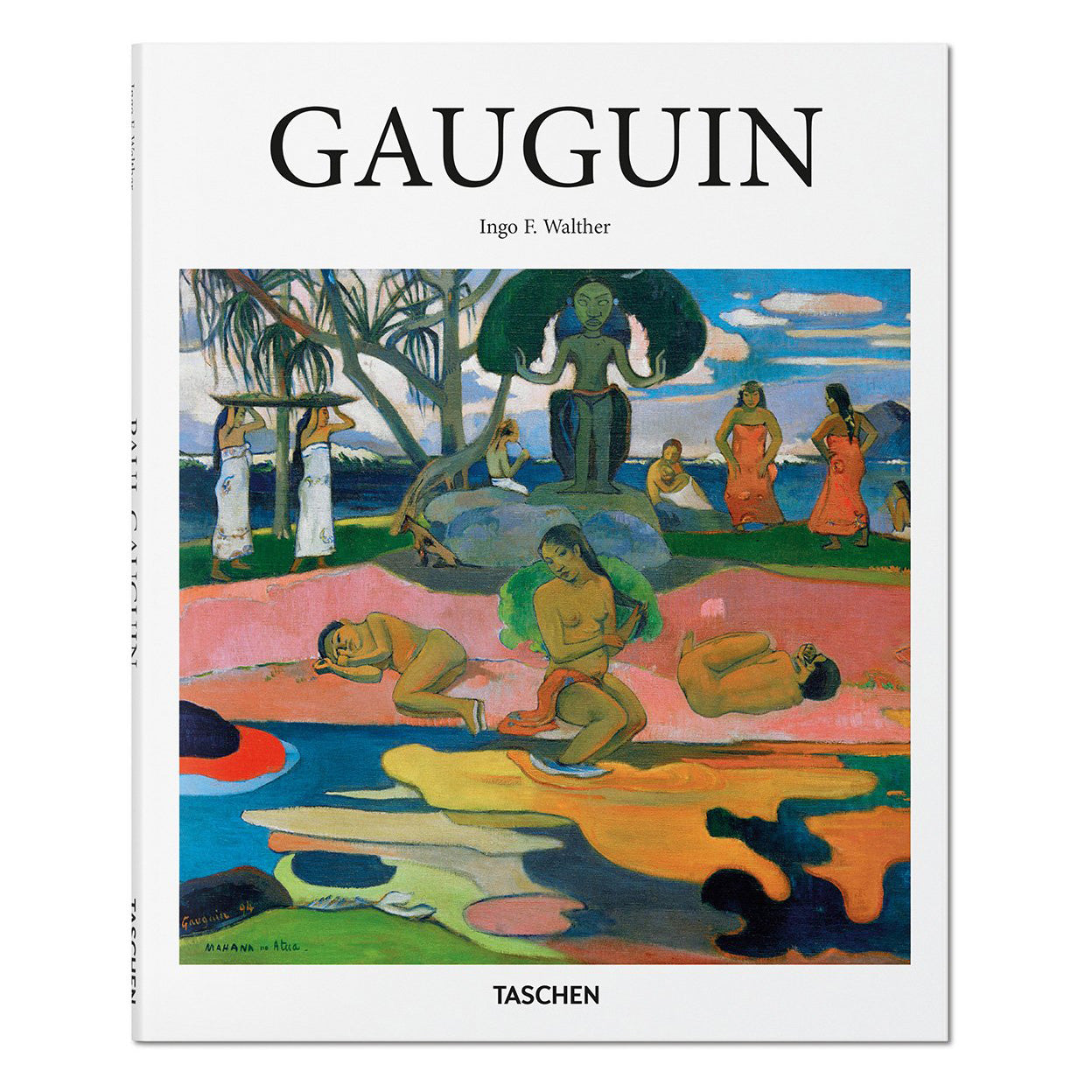
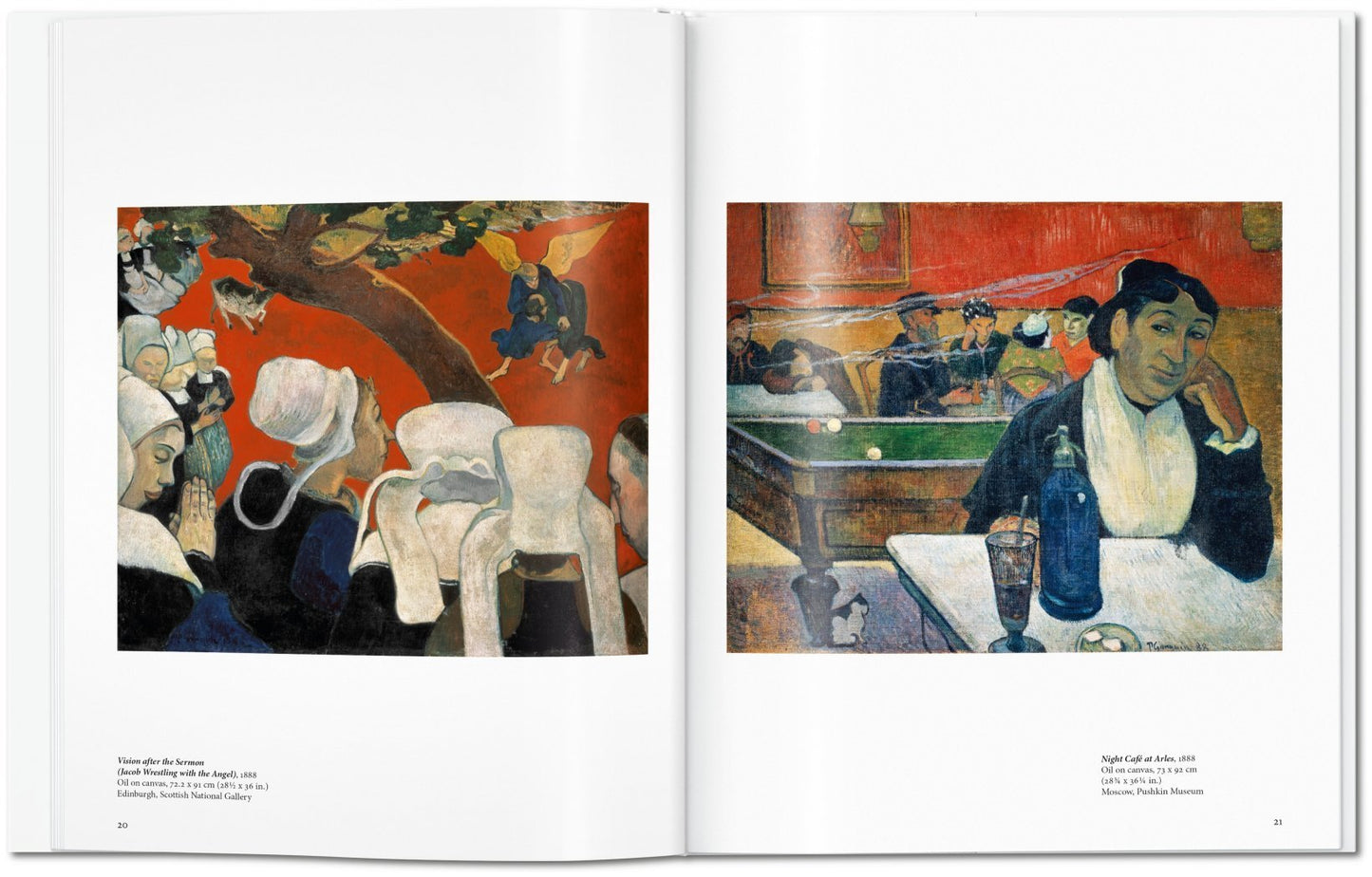
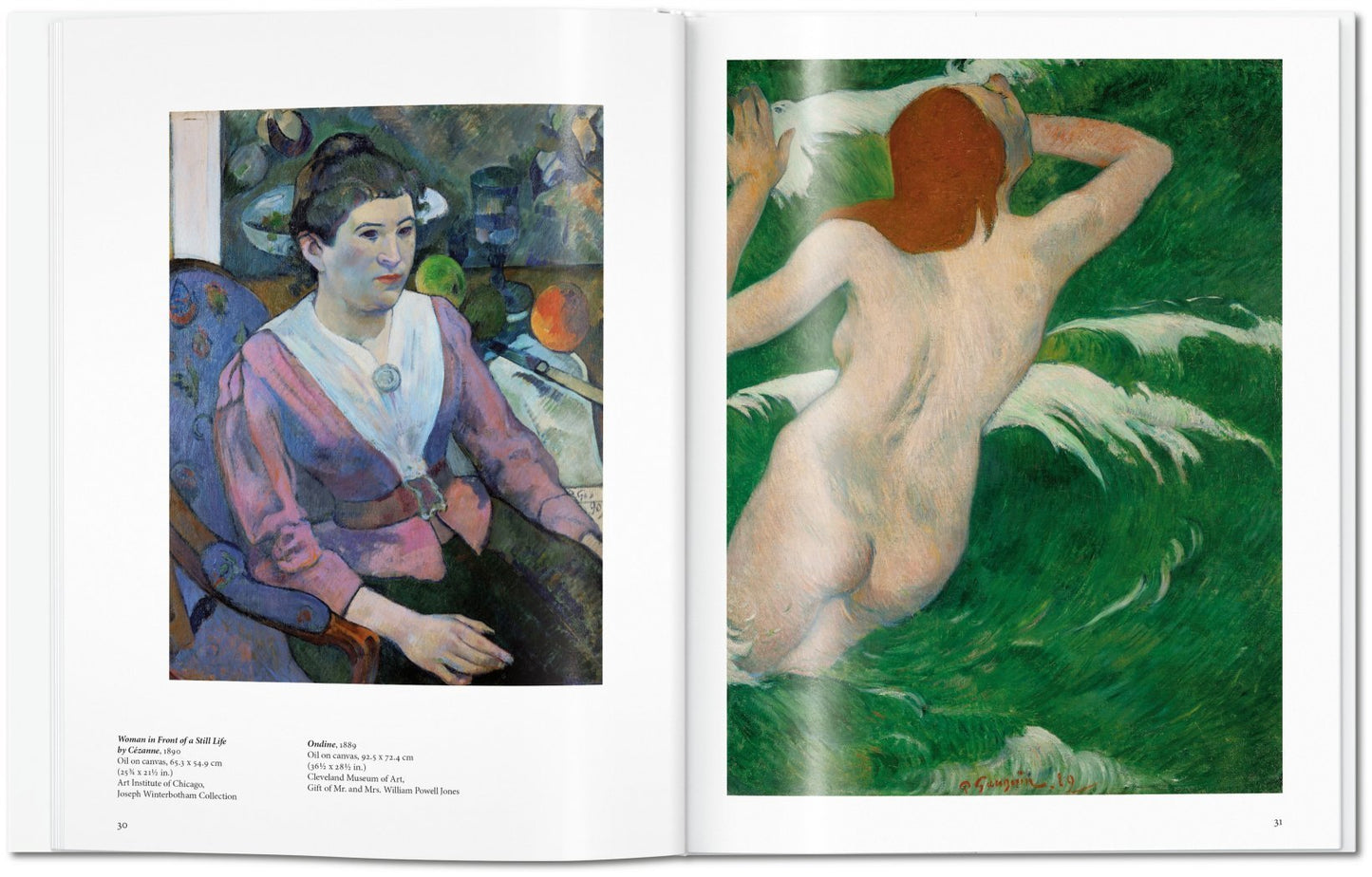
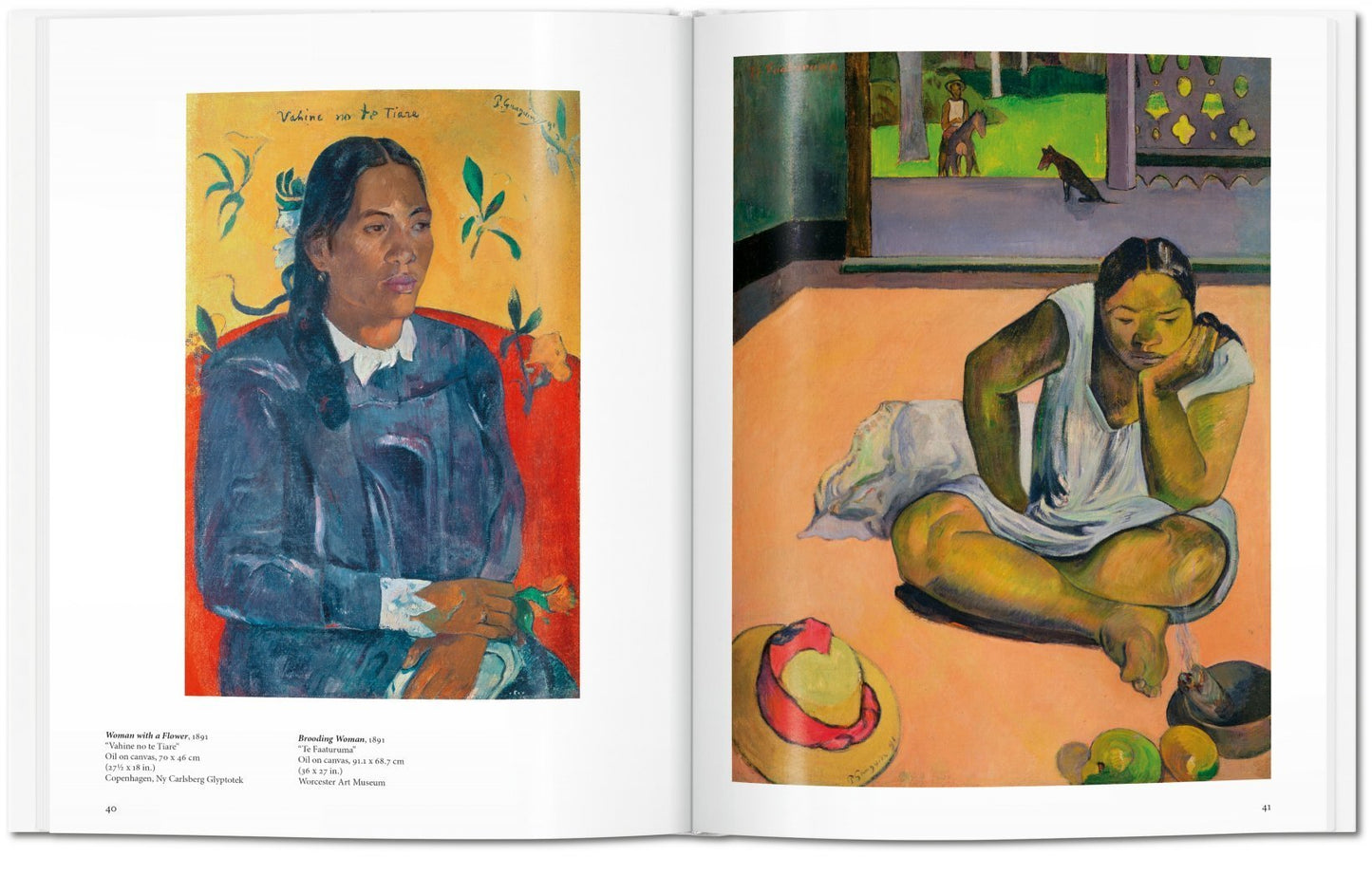
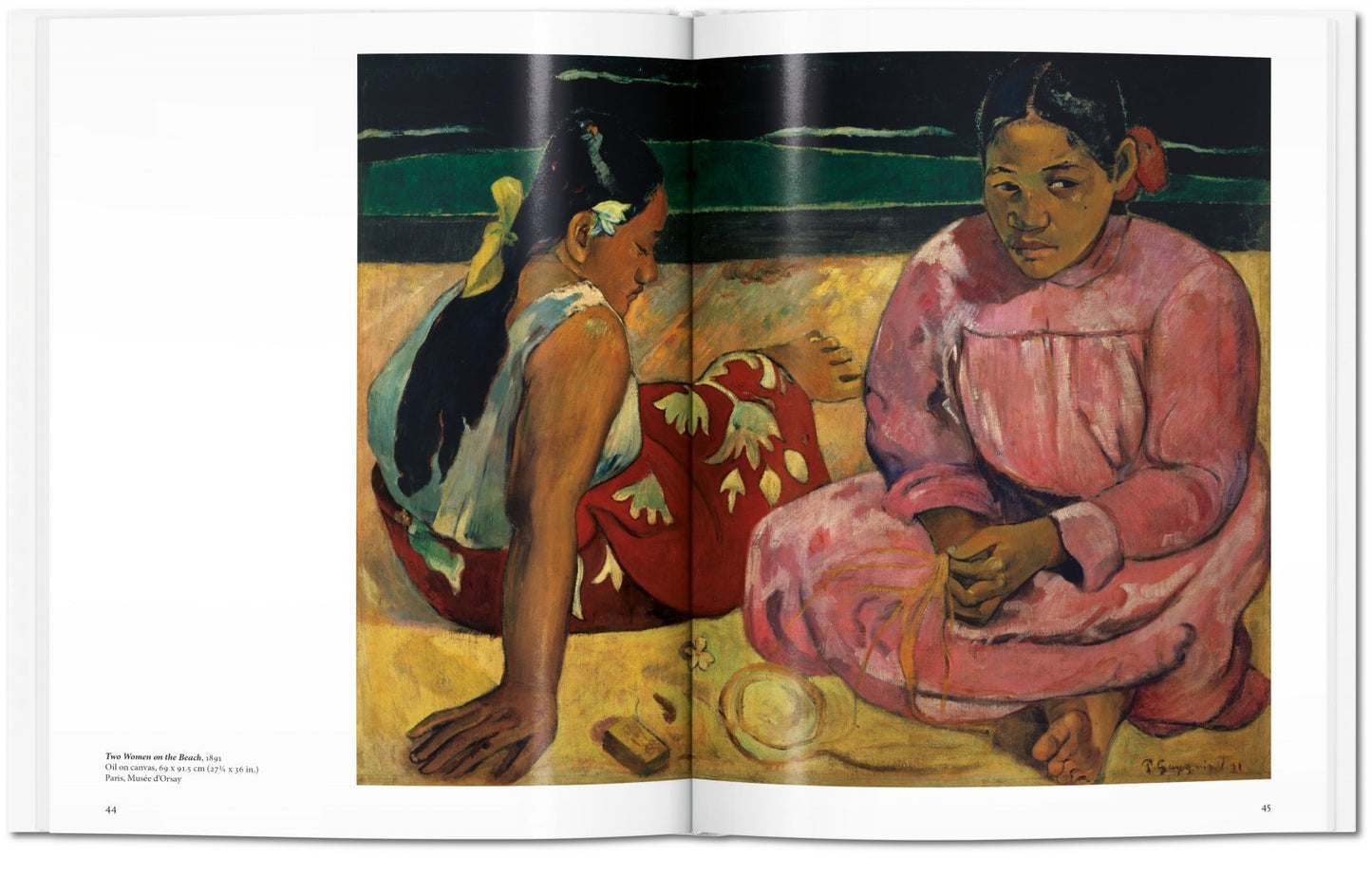
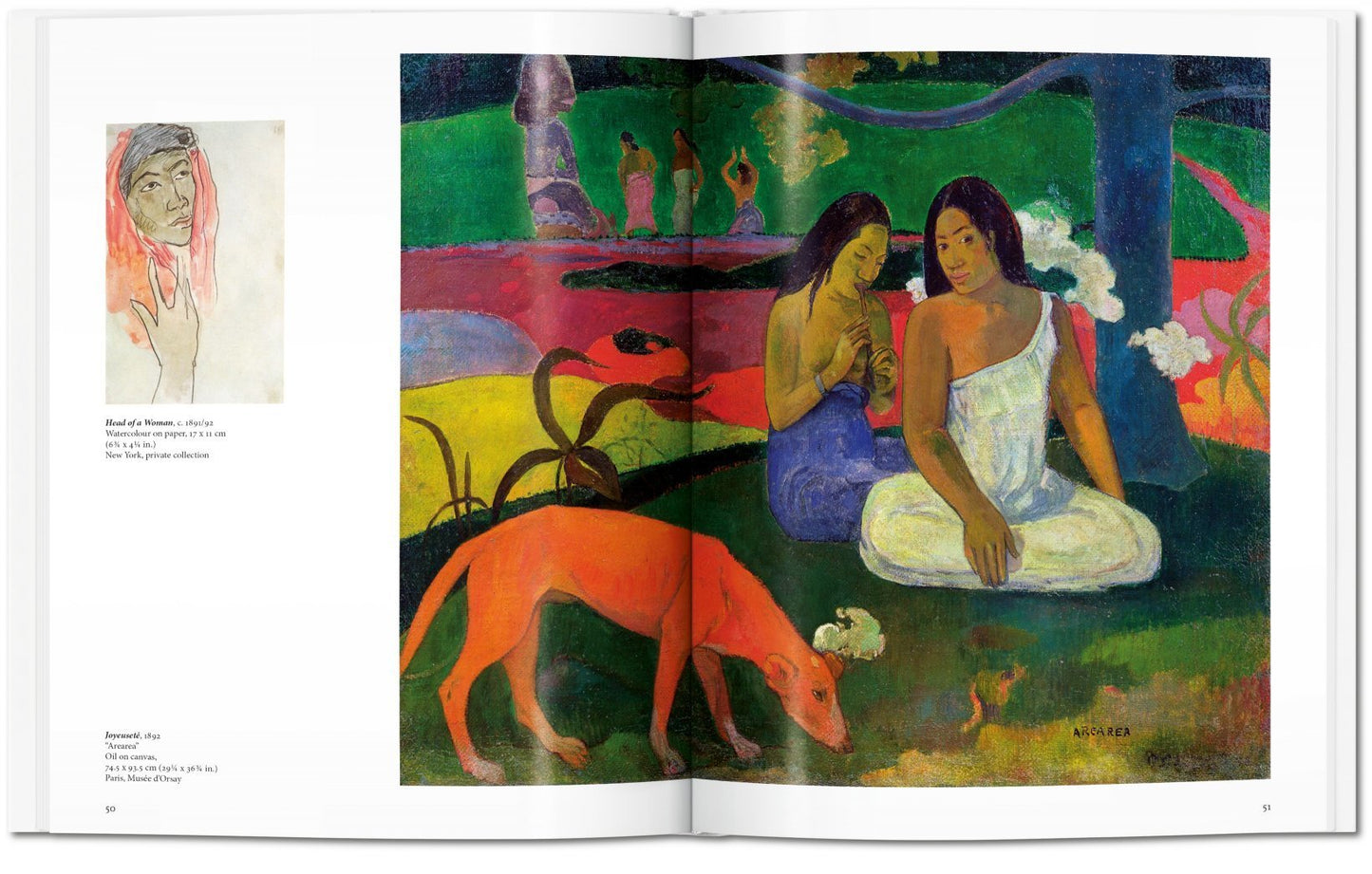
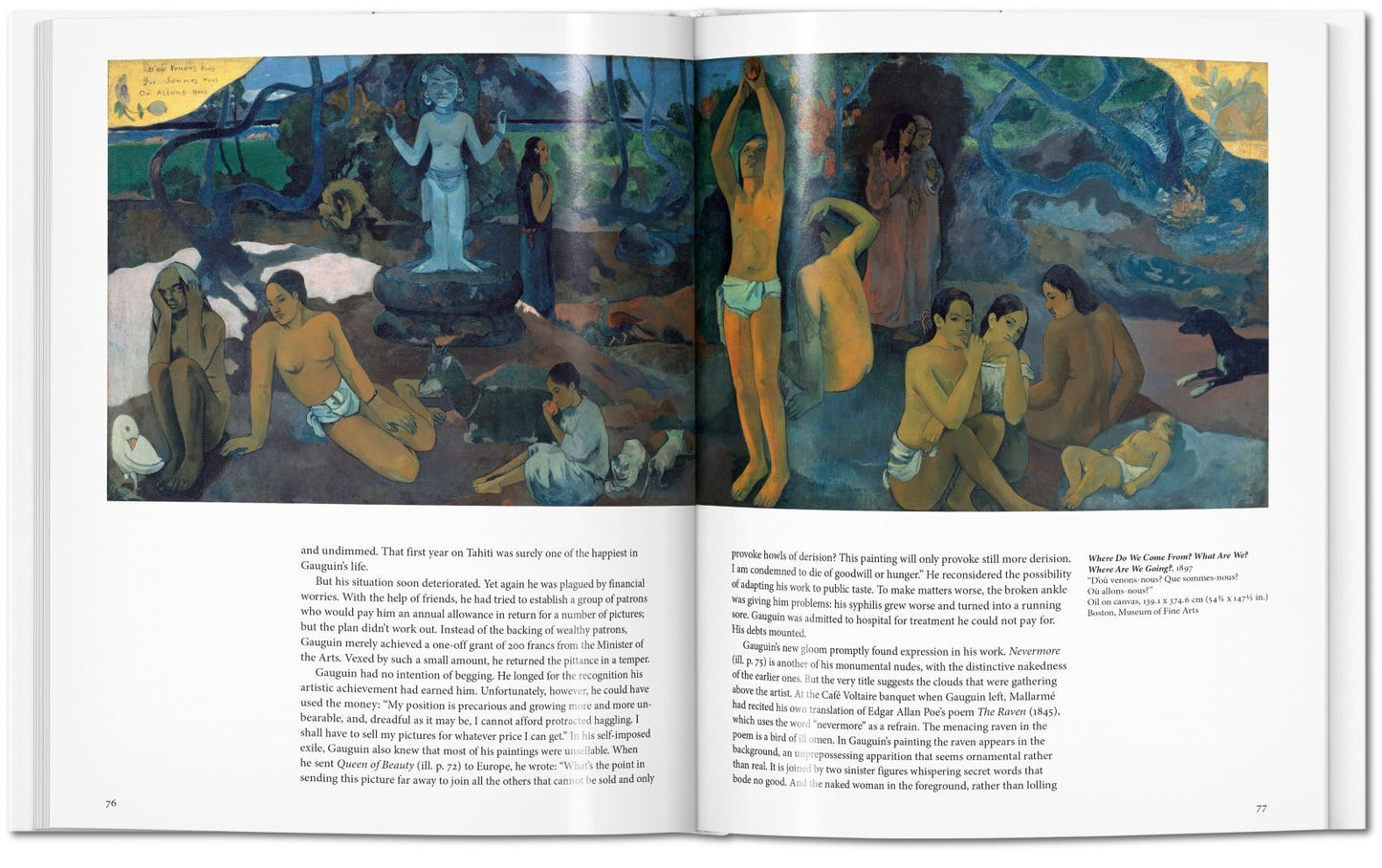

About the Artist
Paul Gauguin
Eugène Henri Paul Gauguin (1848 – 1903) was a French painter, sculptor, printmaker, ceramist, and writer, whose work has been primarily associated with the Post-Impressionist and Symbolist movements. He was also an influential practitioner of wood engraving and woodcuts as art forms. While only moderately successful during his lifetime, Gauguin has since been recognized for his experimental use of color and Synthetist style that were distinct from Impressionism.

About the Publisher
Taschen
For more than 40 years, Taschen has published high-quality art books. Whether in lavishly produced editions for collectors with nearly limitless budgets, or more compact editions with much more gentle price tags, Taschen never compromises on quality. Watch this video to learn more about how Taschen books are made.
More from Taschen
For more than 40 years, Taschen has published high-quality art books. Whether in lavishly produced editions for collectors with nearly limitless budgets, or more compact editions with much more gentle price tags, Taschen never compromises on quality. Watch this video to learn more about how Taschen books are made.
-
1920s Berlin
Regular price $20.00 USDRegular priceUnit price / per -
Diego Rivera: The Complete Murals
Regular price $100.00 USDRegular priceUnit price / per -
Toulouse-Lautrec
Regular price $20.00 USDRegular priceUnit price / per
-
Thank you!
For more than fifty years, every purchase from the Chrysler Shop supports the non-profit mission and educational programs of the Chrysler Museum of Art. Thank you for your support!
-
Membership has its benefits!
Learn more about how you can support the Chrysler Museum and reap the benefits! Member perks include discounts, exhibition previews, reciprocal memberships and more!

